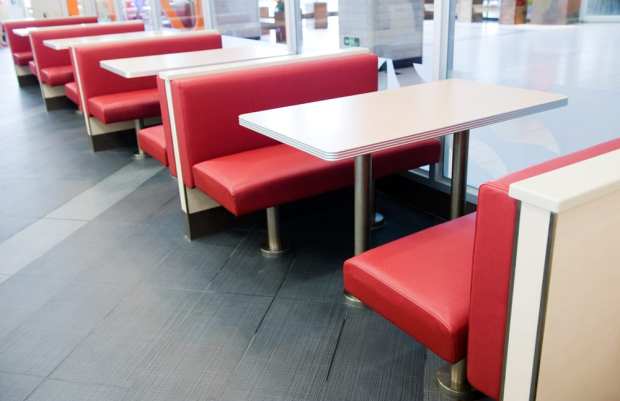Food Falters With New COVID Cases

Mobile order-ahead, added pickup windows, curbside/contactless delivery and other stopgaps of the COVID-19 era are keeping surviving food establishments in business with desperately needed cash flow. But while these measures are helping, restaurant recovery is stalling.
PYMNTS’ ongoing survey series of thousands of consumers and business owners throughout the pandemic show high levels of trepidation among many consumers when it comes to dining out. Our first study of U.S. consumers in March showed that 36 percent were already frequenting restaurants less often 10 days before stay-at-home orders were even issued.
Trademark skepticism had folks dropping out of the on-premise dining scene in droves before even knowing exactly what COVID-19 was, or how bad it would get. Restaurant chains are counting to some extent on good old American optimism to get back on track.
As PYMNTS CEO Karen Webster recently wrote, “We’re living in a world that now, too, seems to suffer from a ‘bad attack of economic pessimism,’ as new outbreaks of the virus threaten the economic recovery.” And while attitude is everything, some renewed pessimism is warranted.
Restaurants vs. COVID, Round 2
According to NPD Group tracking of card transaction declines in restaurant chains, a resurgence of COVID-19 infections during phased reopenings is dealing more blows to the sector.
NPD’s latest monitor of chain-specific transactions shows that “major restaurant chain customer transaction declines have been between -11 percent and -14 percent versus a year ago since the second week of June, compared to the steady improvement in declines from the last week in April through the second week in June. In the week ending July 19, major restaurant chain total customer transactions are down -12 percent versus a year ago, compared to -14 percent in the prior week.”
Noting that “78 percent of restaurants are in geographies that permit on-premises dining,” NPD food industry advisor David Portalatin said. “The ‘recovery’ phase will then tell us whether the industry can recapture enough customer traffic to get back to the pre-COVID baseline, or whether the new normal will reflect a reset where consumers prepare more meals in their home kitchens for a longer term.”
Those findings align with a recent U.S. Bureau of Economic Analysis (BEA) working paper that places the sales decline at “around 70 percent for restaurants” starting in March.
On a related note, the BEA discovered an unwelcome surprise about the “weekend effect” on which eateries rely. “Prior to the pandemic, there was a spike in sales over the weekend … however, post-pandemic, these weekend sales fall flat, relative to pre-pandemic levels,” it said.
The Bright Side
To turn the tide, QSRs, fast-casual restaurants and even full-service restaurants (FSRs) are upgrading POS systems, making structural modifications to retail locations for social distancing, and putting in place whole new procedures, from placing orders to paying for meals to cleaning and sanitizing physical spaces.
PYMNTS’ Order-to-Eat Tracker follows these COVID-era developments, including Shake Shack putting in pickup windows, Panera Bread using geofencing tech to fill orders faster, or Chipotle expanding its Uber Eats partnership as all players seek to considerably boost eCommerce.
There are countless stories of restaurant chains hitting the moving target of successful reopening with creativity and more than a little enthusiasm.
“Many QSRs are bracing for the pandemic’s economic fallout even as they adopt digital tools to capitalize on the shift to online and mobile ordering, with recent research suggesting the restaurant industry will lose about $240 billion in revenue by the end of the year,” PYMNTS reported.
“It is thus critical for QSRs to pair their mobile apps with loyalty and rewards solutions that can keep customers engaged and boost revenues,” Zipporah Allen, vice president of digital experiences for Mexican fast food QSR chain Taco Bell, recently told PYMNTS.
